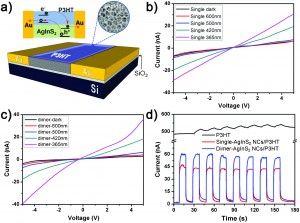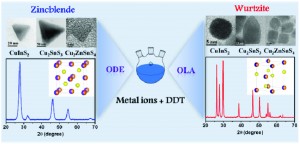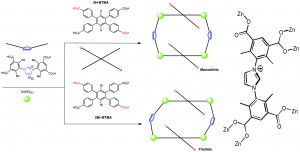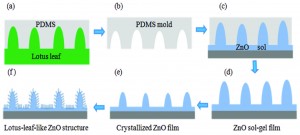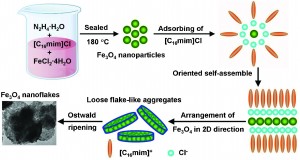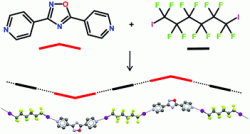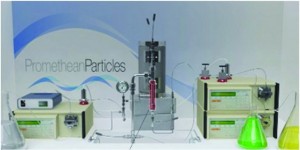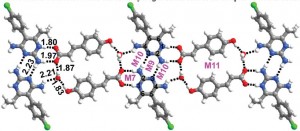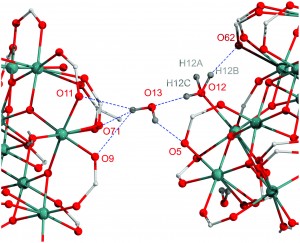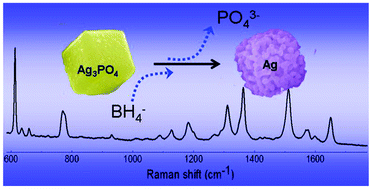Following on from a previous blog on CuInS2 nanocrystals, this post is about a very similar material: AgInS2 nanocrystals! Similar to CuInS2, AgInS2 also shows desirable properties such as a suitable band gap energy, high absorption coefficient and low toxicity, making them good candidates for optoelectronic devices. As the size and morphology of these crystals determine how they perform, it will be useful to produce nanocrystals with uniform shapes and sizes.
In this paper, a method of synthesising AgInS2 nanocrystals with a uniform size is presented. The authors also demonstrated a way to vary the size of the crystals by changing the composition of the solvents in which the crystals form. An investigation of the photoelectric properties of the AgInS2 nanocrystals was carried out, in which the crystal were hybridised with poly (3-hexylthiophene) to form nanodevices. These devices operate as switches, and with their high sensitivity to light, fast response times, and stability to reversal, can be utilised in many photoelectric applications.
Read their article and find out more:
Controlled synthesis of AgInS2 nanocrystals and their application in organic–inorganic hybrid photodetectors
Manjiao Deng, Shuling Shen, Xuewen Wang, Yejun Zhang, Huarui Xu, Ting Zhang and Qiangbin Wang
CrystEngComm, 2013, Advance Article
DOI: 10.1039/C3CE40173A, Communication


